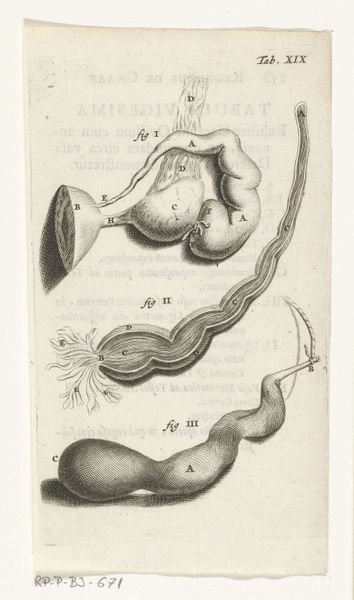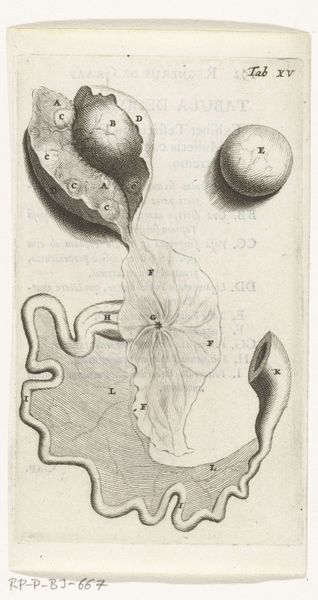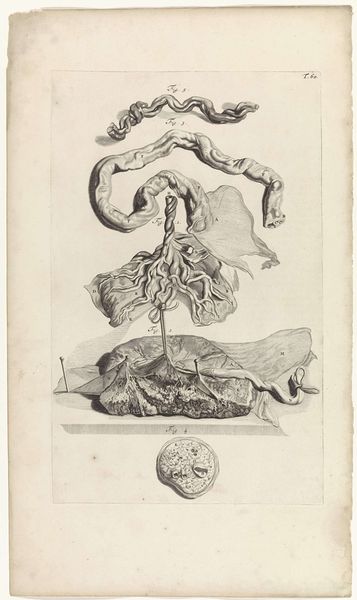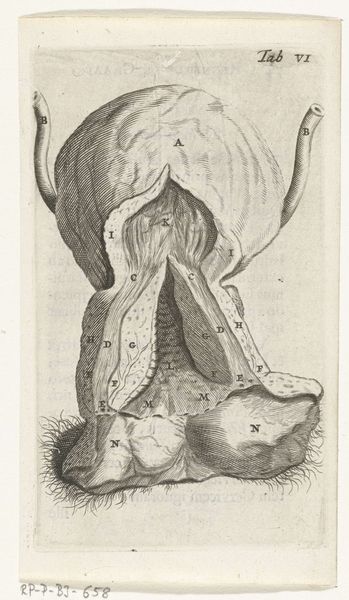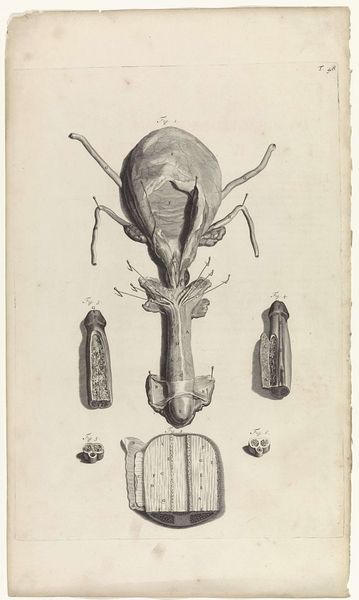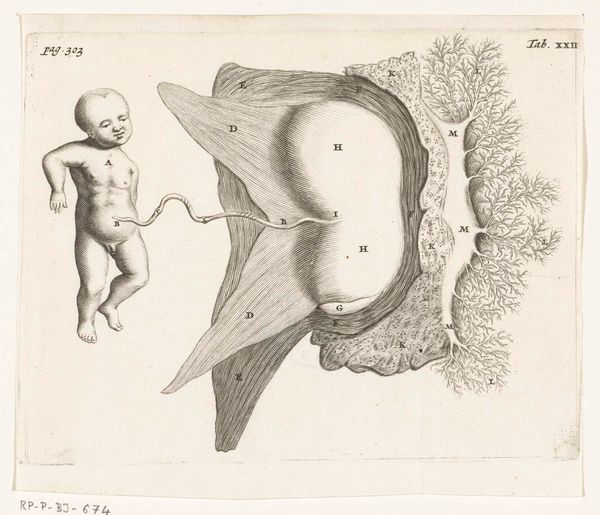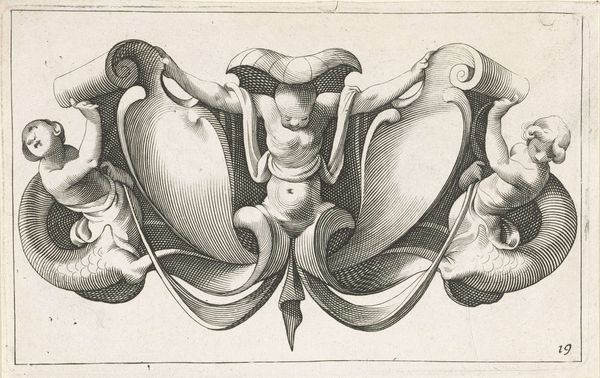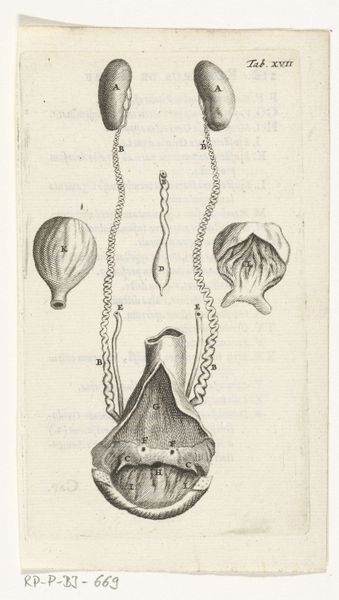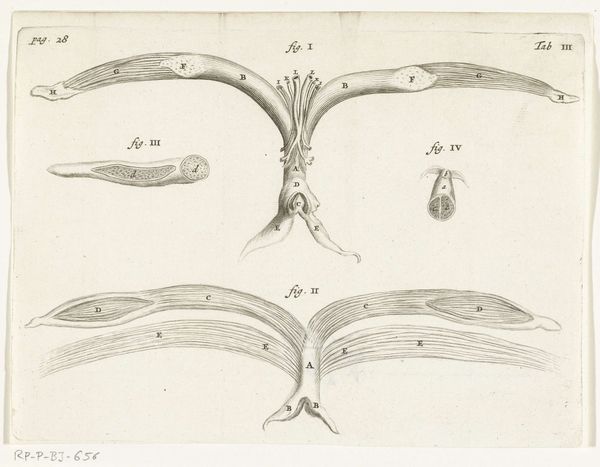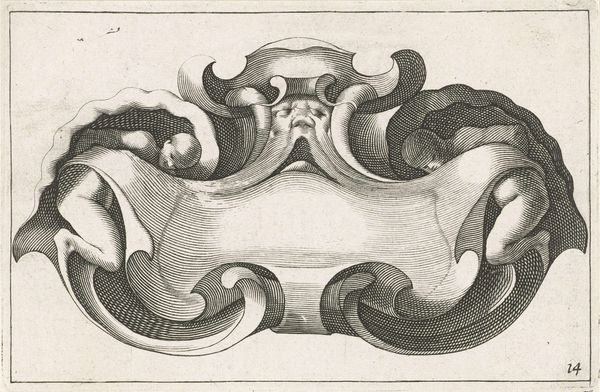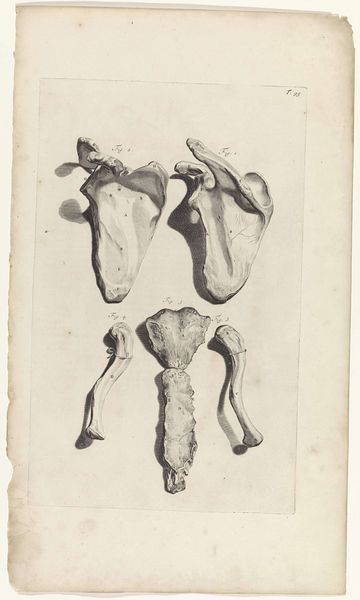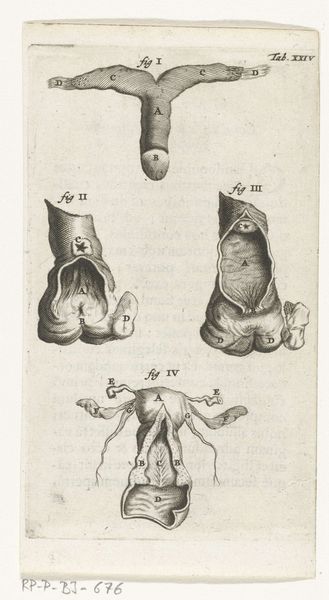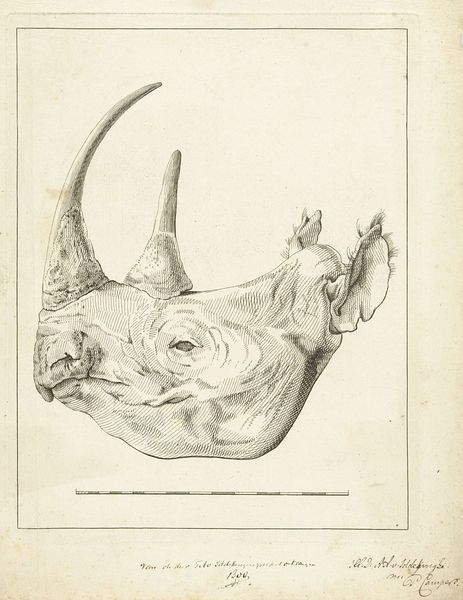
print, etching
#
baroque
# print
#
etching
#
figuration
#
history-painting
#
academic-art
Dimensions: height 143 mm, width 165 mm
Copyright: Rijks Museum: Open Domain
Curator: Editor: Okay, so this is "Anatomical depiction of an ectopic pregnancy" by Hendrik Bary, an etching from 1672 held at the Rijksmuseum. It's certainly... intense. What strikes me is its almost scientific coldness despite depicting something so deeply personal and fraught. What are your thoughts? Curator: Well, it’s a dance between detachment and the undeniable reality of the body, isn't it? In the 17th century, anatomical illustration was both science and spectacle. There's an almost baroque flair in the rendering of the tissue, don't you think? As if even the internal is destined for the stage. I’m drawn to the stark contrast of textures – the smooth curves against the almost brutally exposed cross-sections. Does it evoke any personal resonance for you? Editor: It makes me think about the historical context. Childbirth was obviously a much riskier affair. Seeing it laid bare like this makes it more real. All the lettering seems strange, as if this reality needed labels to be validated. But, wow... baroque? I can see it now that you mention the texture and rendering. The theatricality lurking even within the clinical view. I suppose there is a weird, delicate beauty too. Curator: Beauty found even in unexpected places! Bary seems to me a bold storyteller, navigating uncharted territories within. Think of all the unseeable internal worlds we all contain. It almost hints at a world, unseen yet so fundamental to being alive. This artwork makes us question: does objective, detailed truth enhance our appreciation for that very fact of existing? Editor: That's a lot to consider. Thank you. Curator: It makes you think, right? Precisely why these hidden gems in the collection capture the eye!
Comments
rijksmuseum about 2 years ago
⋮
In 1672 physician and anatomist Reinier de Graaf published De mulierum organis, a book about the organs of the female body, with prints by Hendrik Bary. De Graaf was the first to conclude that a foetus grows from the mother’s egg cell after it is fertilised by the father’s seed. He also discusses anomalies such as ectopic pregnancies (when the fertilised egg implants outside the womb).
Join the conversation
Join millions of artists and users on Artera today and experience the ultimate creative platform.
